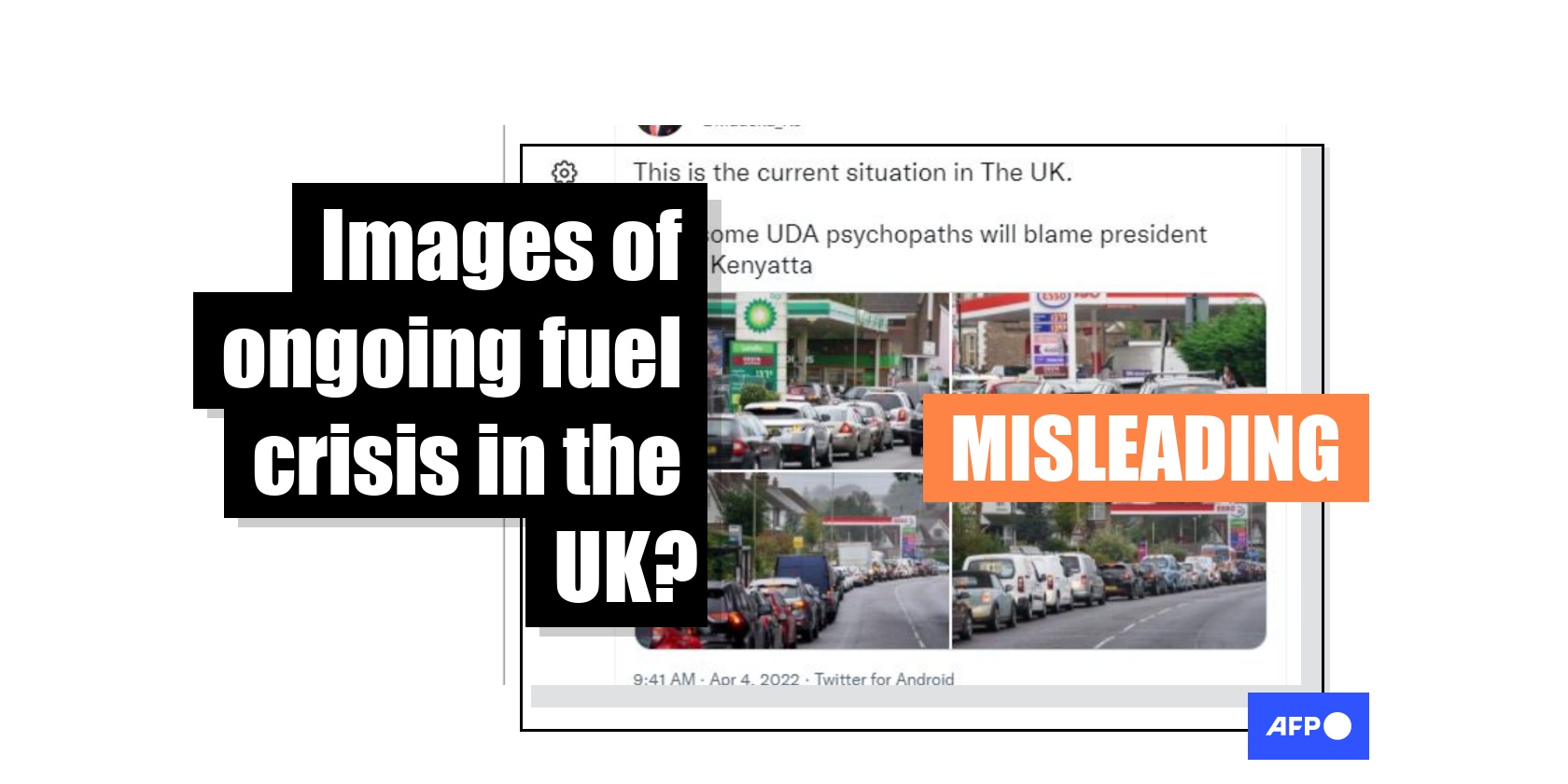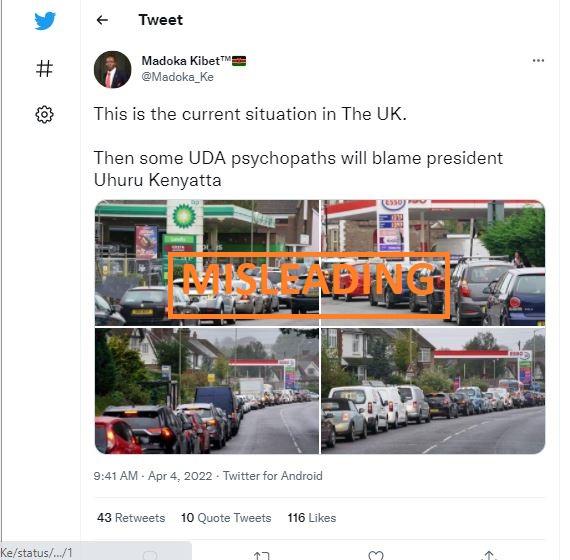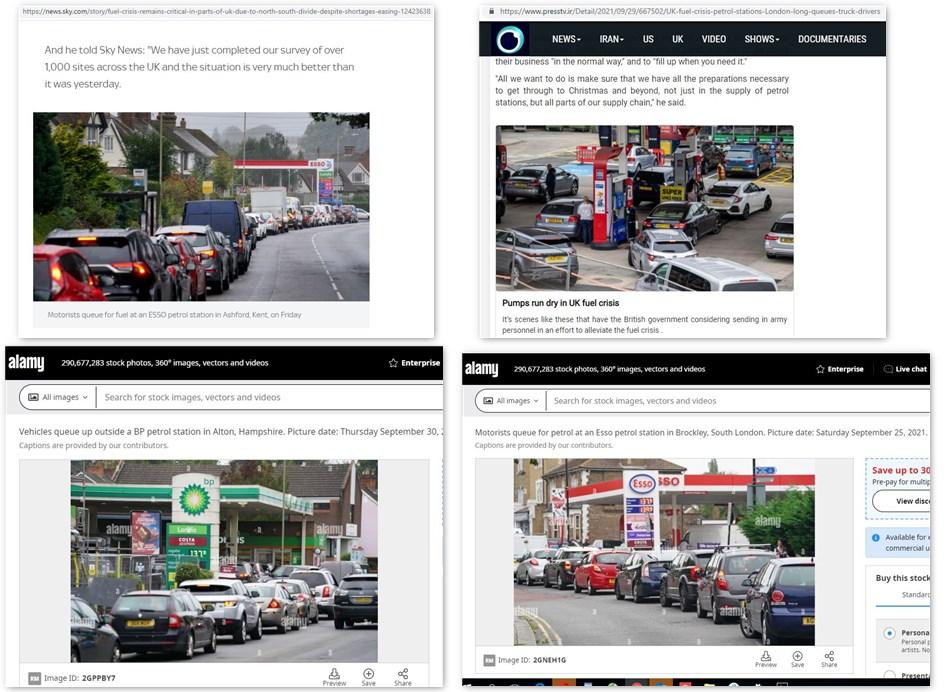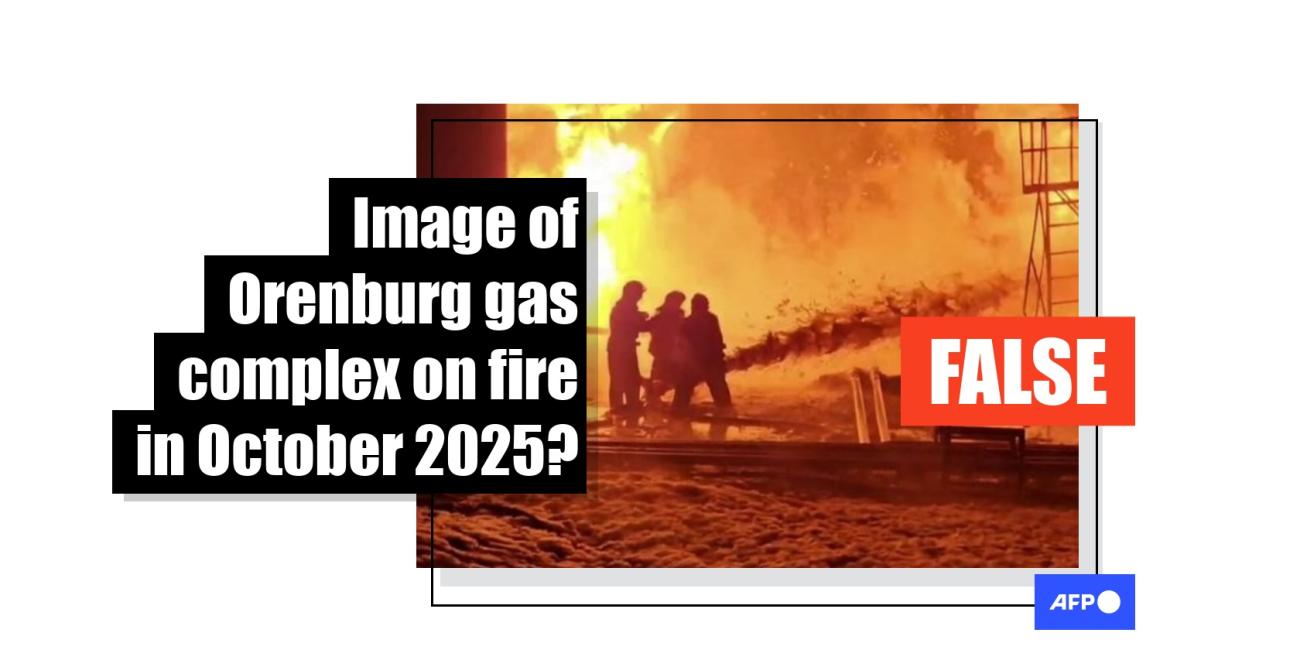
Old photos of vehicles lined up at fuel stations in UK circulate in Kenya to justify local shortage
- This article is more than three years old.
- Published on April 6, 2022 at 15:32
- 2 min read
- By Mary KULUNDU, AFP Kenya
On March 4, 2022, this Twitter account shared four images of vehicles in long lines at petrol stations alongside a caption that reads: “This is the current situation in the UK. Then some UDA psychopaths will blame president Uhuru Kenyatta”.
The tweet links current fuel shortages in Kenya to the global effects of the Ukraine-Russia war then goes on to criticise political leaders – allied to Kenyan deputy president William Ruto’s political party United Democratic Alliance (UDA) — for blaming the country’s leader Uhuru Kenyatta for the domestic crisis.

The claim was repeated in another tweet and in a Facebook post.
For more than a week now, Kenya has experienced major fuel shortages, caused by the government’s failure to pay subsidies to oil marketers.
In Kenya, the government pays oil providers to subsidise costs for motorists at the pumps, but the companies have claimed they are owed payments for four months. As a result, they stopped supplying fuel, leading to countrywide scarcity.
While there has been instability in world oil markets owing to the war between Ukraine and Russia, the Kenya Pipeline Company (KPC) confirmed on April 2, 2022, that this was not the issue in Kenya and that the country had ample stocks.
— KPC (@kenyapipeline) April 2, 2022
The claim, together with the images, is therefore misleading.
Old images
A reverse image search led to a series of news reports published along with the images in September and October last year (see here, here, and here) when pumps in the UK ran dry following a shortage of truck drivers to transport fuel products from refineries.

The UK shortage was also attributed to panic buying after BP warned the public on September 23, 2021, that it would have to "temporarily" close a handful of its petrol stations, because of a lack of drivers.
But, by October 5, 2021, the situation in the UK began returning to normal.
Meanwhile, Kenya’s problems have become a political hot potato as opposition leaders, including Ruto — who fell out with Kenyatta — criticised the government and linked the fuel crisis to the work of “cartels and state barons”.
On April 4, 2022, Kenyatta signed off on a supplementary budget to settle the government's debt with oil marketers in an attempt to restore supply.
Copyright © AFP 2017-2025. Any commercial use of this content requires a subscription. Click here to find out more.
Is there content that you would like AFP to fact-check? Get in touch.
Contact us




